Computer Components
Computer Memory
Computer Network
Computer Virus
Number Systems
Shortcut Keys
Terms
- What is a Browser
- Google Chrome
- Mozilla Firefox
- Internet Explorer
- Windows
- Computer Ports
- program
- Printers
- Microphone
- Monitor
- Motherboard
- Incognito Mode
- Mouse
- Memory Card
- CD
- ID
- ISO
- character
- server
- Keyboard
- Remote
- webcam
- Data
- URL
- keypad
- hub
- File
- Bytes
- Exabyte
- Gb
- Kilobyte
- Megabyte
- Petabyte
- Terabyte
- What is HDD
- What is SSD
- Memory vs Storage
- Non-volatile memory
- What is M.2 SSD
- How To Reboot A Computer
- Multi-Level Cell
- NAND Flash Memory
- What is the lock screen
- Block Storage
- Universal Serial Bus
- VRAM
- Cloud Hosting
- CompactFlash card
- What is WAP
- Classification of Memory
- Hardware vs Software
- Uses of Computer
- Uses of Internet
- Abacus
- Best Proxy Servers
- SSL VS. TLS
- Web Console
- GPU
- Difference Between LAN and WAN
- SSD and HDD
- Computer
- Data Migration
- JEDEC
- MLC vs. TLC vs. SLC NAND Flash
- VirtualBox Installation
- Num Lock
- PC
- MAC
- Continuous Data Protection
- Persistent Storage
- What is Bit
- Software Definition
- What is a File System
- When was the first computer invented
- How many generations of the computer
- Minicomputer
- Fourth Generation of Computer
- What is a Username
- What is ALU
Questions
Keyboard
A keyboard is one of the primary input devices that allows users to input text into a computer or any other electronic machinery. It is a peripheral device that is the most basic way for the user to communicate with a computer. It consists of multiple buttons, which create numbers, symbols, and letters, and special keys like the Windows and Alt key, including performing other functions. The design of the keyboard comes from the typewriter keyboards, and numbers and letters are arranged on the keyboard in that way, which helps to type quickly.
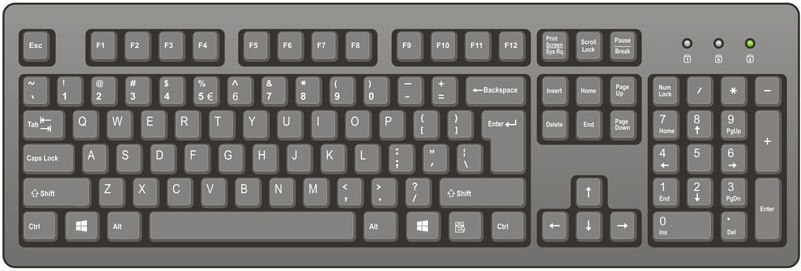
The above keyboard design is called QWERTY design because of its first six letters across in the upper-left-hand corner of the keyboard. Although the keyboard design is derived from the typewrites, nowadays, it also includes many other keys as well as Alt/Option, Control, and Windows key can be used as shortcuts to perform the particular operation by combination with other keys. For example, if you press Control + S while working on a document in Microsoft Word, it will save the document you are working on. Furthermore, most of the keyboards have function keys (F1 to F12 or F16) at the top of the keyboard and arranged arrow keys in the downside used to perform numerous functions.
Types of keyboards
Most computer users use the standard keyboard, which connects to the computer. Although there are many types of a computer keyboard, such are as follows:
1. Flexible keyboard: It is a type of keyboard that is made of soft silicone with highly portable. It is water and dust-resistant and does not require constant cleaning. It acts the same as a standard keyboard and connects to the computer via a USB connection serial port. These types of keyboards can also be more durable in terms of some ways, as compared to a traditional keyboard.
The flexible keyboard is made of soft silicone that saves it from a number of different substances. For instance, if you use the keyboard near the liquid spaces, the silicone skin provides excellent protection against spills. Furthermore, it does not make a sound when being used; that's why it is also called a silent keyboard. These keyboards are useful for traveling time because they can be rolled up into a bag and flexible in outdoorsy situations.
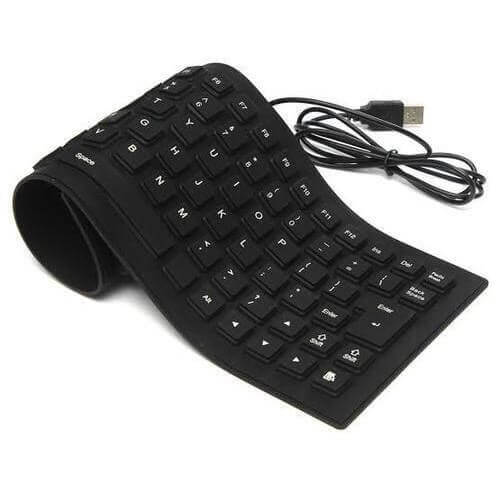
2. Ergonomic Keyboard: This type of keyboard is beneficial for your body posture. Instead of adjusting yourself to fit the keyboard, it is designed to fit you easily, ease of use, and reduce strain. It is designed in that way; instead of bending their hands, it allows users to straight their hands. Generally, the space-bar is bigger as compared to a regular keyboard, which allows for fast typing.
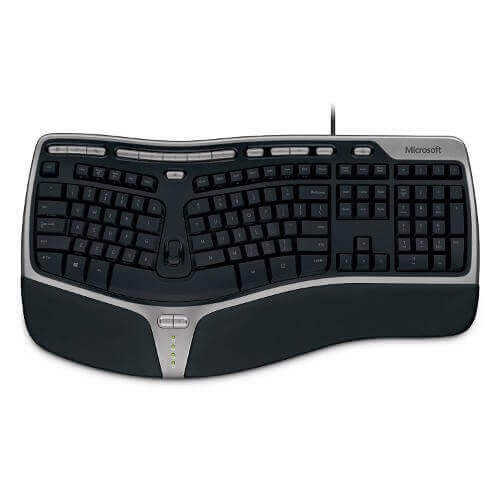
3. Wireless Keyboard: It is a computer keyboard that is connected to computers, laptops, or tablets without any cables. It uses radio frequency (RF), infrared (IR), or Bluetooth technology to connect with devices. Users can move the wireless keyboard around without having to put it on a desk as it provides portability and flexibility to the users. It is designed by stainless steel material that increases its life for a long time. It can set up very easily by plugging the USB receiver into the computer.
It utilizes light waves to transmit signals to other infrared-enabled devices as it is based on infrared technology. Some wireless keyboards use radio frequency technology, which communicates via signals with a range from 27 MHz to up to 2.4 GHz.
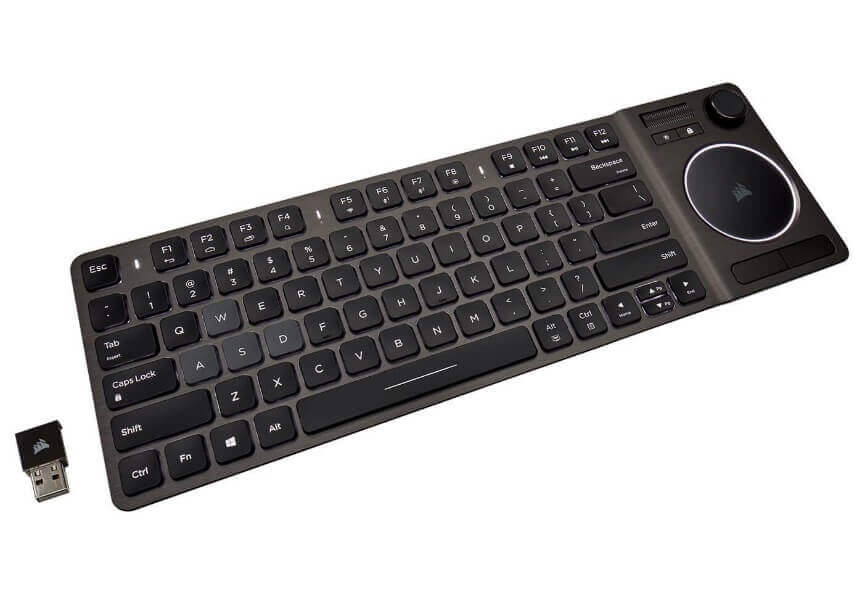
4. Mechanical Keyboard: It is made with high quality that commonly used in both home and office. It is designed for long life with high durability and responsiveness. It provides crisp click sound, medium resistance, and better feedback for gaming performance and ultimate typing. It offers framing, switches, type print methods, functionality, PCB board, key construction, LED lighting, or more other better features as compared to traditional rubber dome keyboards.
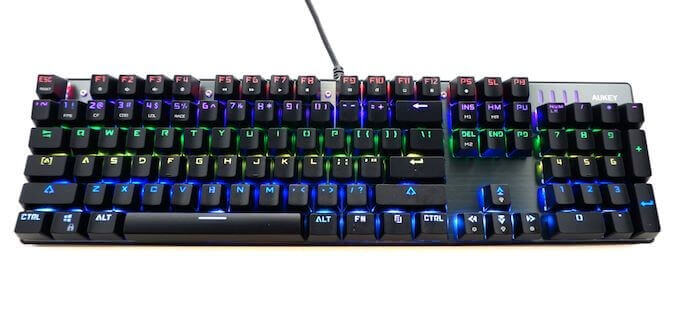
5. Virtual Keyboard: It is a software-based keyboard that enables users to type without the need for physical keys. It is an alternative for a physical keyboard or a digital representation of a QWERTY keyboard. These types of keyboards commonly have many pages of characters, including numbers, letters, punctuation, and symbols. Some virtual
keyboards also include options to insert emojis, stickers, or animated GIFs on the basis of the device's operating system. The devices that contained virtual keyboard are tablets, smartphones, and other portable devices, because these devices do not require the constant use of a physical keyboard.
Examples of virtual keyboards
- Gboard: Google created a virtual keyboard for Android and iOS that includes features like GIFs, customizable themes, and translation capabilities.
- OSK: It stands for an on-screen keyboard. It is commonly found in Microsoft Windows.
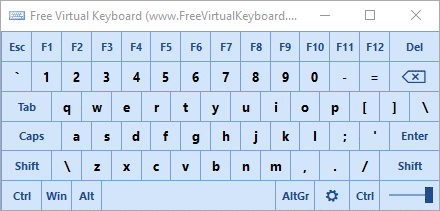
6. Projection Keyboard: It is a form of computer input device that can be connected via Bluetooth to the mini PC, tablet computer, or even smartphone. In projection keyboard, the image of a virtual keyboard is projected onto a surface. The device records the corresponding keystroke when a user touches any key from the shown keyboard on the surface. Some devices are connected via Bluetooth devices such as tablets, smartphones, mini-PC with Android, Windows operating system or iOS, etc.
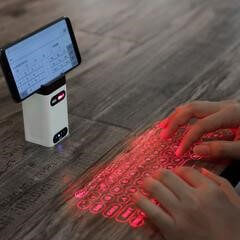
7. Gaming Keyboard: A keyboard that contains a few specific keys used for gamers is known as a gaming keyboard. The W, S, D, A, and arrow keys are widely used for games on the standard QWERTY keyboard. Gaming keyboards (mostly mechanical keyboard), the key switches needless depression that provides faster action for games.
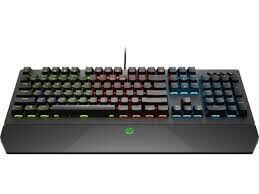
Invention of the first keyboard?
There were different types of invention, as well as the typewriter, keypunches, and teleprinters that helped to develop the computer keyboard. In the 1700s, the first writing devices were designed, and Henry Mills filed patented in London, England, in 1714.
Invention of the typewriter
The different typing and writing devices were created around the world in the late 1700s and the beginning of the 1800s. Although, in 1868, Christopher Sholes developed and patented the first practical typewriter and the word Type-Writer that is considered to be the first typewriter.
Additionally, the QWERTY keyboard design was introduced by the Type-Writer, which is still
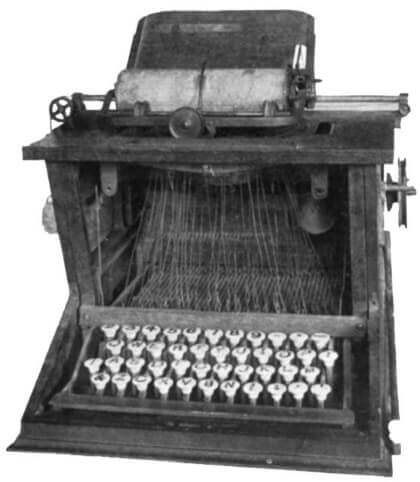
mainly used on US keyboards today. Samuel W. Soule, Christopher Sholes, and Carlos Glidden created a Type-Writer that picture shown in the below:
In 1878, the first keyboard with a Shift key was invented that had one Shift key on the left side of the keyboard. The Underwood typewriter is considered the first successful modern typewriter, till 1939, five million of its typewriters were sold. The first Underwood typewriter was invented by Franz Xaver Wagner, and on 27 April 1893, he filed to patent the typewriter U.S. patent 523,698. The biggest improvement of Underwood typewriter, it was capable of seeing the writing it was typed. Later in 1895, Franz Xaver Wagner created the Underwood company with the help of John Underwood and introduced its first typewriter in 1896.
Before introducing the IBM Selectric typewriter by IBM on 27 July 1961, typewriters from all manufacturers began to become more alike. Unlike other typewriters, the IBM Selectric typewriter used a typeball, which containing characters that would strike an ink ribbon. Furthermore, this typewriter was sold more than 13 million until 1986.
The invention of keypunch, the telegraph, and teleprinter
Joseph Marie Jacquard developed the Jacquard Loom in the late 1700s, which was expanded by Herman Hollerith with his keypunch inventions in the late 1800s and the beginning of the 1900s.
In 1832, Pavel Schilling invented the first electrical telegraph and to send Morse code messages over a line, allowing for a single key to be used. Later in 1846, a printing telegraph was patented by Royal Earl House, which used 28 piano-style keys. The keys made it easy to send messages by representing each letter in the alphabet. In 1874, the Baudot code was invented by Emile Baudot; later, it was extended by Donald Murray (inventor of thetelegraphic typewriter). Charles Krum helped invent the teleprinter by working to continue on Frank Pearne that was developed from 1902 to 1918. In August 1907, he filed patent U.S. patent 862,402. Also, he filed patent 888,335 in May 1908, and patent 1,286,351 in May 1910.
Early computers with keyboards
After many years, in 1964, the introduction of Multics and video display terminals (VDTs), which enabled users to see typing on the screen what they are typing.
The DataPoint 3300 began to ship by the Computer Terminal Corporation in 1969. It was the first computer terminal designed to replace the teleprinter. Some other versions of this terminal were also introduced as well as HP 2600A, DEC, and VT06. The DataPoint 3300 was a terminal that was able to move the cursor using arrow keys, and it used a screen display to show typed text. Also, it had the ability to clear all text on the screen.
At the beginning of the 1970s, keyboards began to use what we use today. Those keyboards were heavy mechanical or reconstructed electric typewriters from companies such as IBM. Apple, Radio Shack, and Commodore introduced their computers in the late 1970s that come included keyboards. Later, IBM PC and the Model F keyboard introduced by IBM in August 1981.
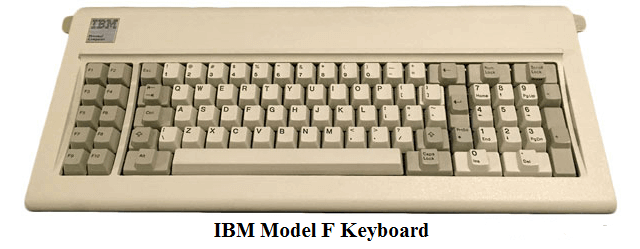
The Model M keyboard was introduced by IBM in 1986, which contained function keys like today's keyboards have across the top of the keyboard. The Model M is still considered a high keyboard as it has a standard US layout with 101-key, which is used for full-sized keyboards today. It is also designed for windows keyboards that have 104-key with the Menu keys and windows keys.
Since IBM introduced the Model M keyboard, many changes have been in the keyboard that is in use today. A membrane helps to manufacturer computer keyboards easily and reduce manufacturing costs. Furthermore, the membrane keyboard makes the keyboard lighter, thinner, and quieter as compared to the first mechanical keyboards.


